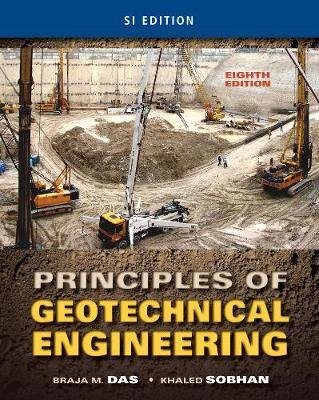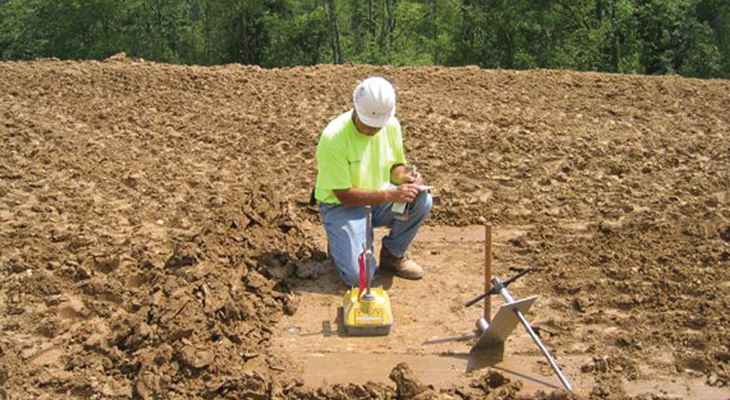Top Reasons to Work With a Geotechnical Specialist for Your Construction Jobs
Top Reasons to Work With a Geotechnical Specialist for Your Construction Jobs
Blog Article
Investigating the Interdisciplinary Nature of Geotechnical Design and Its Influence on Ground Improvement and Structure Design
By incorporating insights from architectural, environmental, and geological techniques, geotechnical designers are geared up to attend to complex dirt actions and site-specific challenges. This collaborative approach not just enhances the efficacy of methods such as soil stabilization and vibrant compaction but additionally ensures that tasks adhere to sustainability principles.
Overview of Geotechnical Engineering
Geotechnical engineering is an important branch of civil engineering that concentrates on the behavior of earth materials and their interaction with structures. This technique includes the research study of rock, soil, and groundwater, aiming to comprehend their residential or commercial properties and just how they influence the efficiency of civil engineering tasks. Geotechnical engineers assess the hydraulic and mechanical behavior of these materials to make certain the security and safety and security of frameworks such as buildings, bridges, and maintaining wall surfaces.
The scope of geotechnical design includes website examinations, dirt sampling, and testing, in addition to evaluation of dirt technicians and rock technicians. Engineers utilize advanced methods to examine ground conditions, identify potential hazards, and layout efficient ground enhancement options. This might entail techniques such as soil stablizing, grouting, and the usage of geosynthetics, which enhance the toughness and sturdiness of the ground.
In addition, geotechnical engineering plays a crucial duty in foundation style, identifying proper foundation kinds based on dirt characteristics and loading problems. By incorporating extensive screening and evaluation, geotechnical designers contribute considerably to the sustainability and strength of framework, making certain that structures can stand up to ecological and operational tensions over time.
Key Interdisciplinary Relationships

Furthermore, environmental design plays an essential duty in analyzing the effect of geotechnical activities on the bordering community. This cooperation is important for developing lasting practices that lessen environmental degradation throughout excavation or ground renovation processes.
In addition, the integration of geotechnical engineering with geology boosts the understanding of subsurface conditions, facilitating even more accurate site characterizations (geotechnical specialist). This partnership aids in danger analysis, particularly in areas prone to landslides or seismic task, thus informing risk reduction approaches
Finally, innovations in technology have resulted in interdisciplinary cooperation with information scientific research and geoinformatics. These areas add to improved modeling and evaluation techniques, enabling much more accurate predictions of soil actions under various problems. Therefore, the interconnectedness of these disciplines enriches geotechnical engineering, advertising technology and efficiency in foundation design and ground renovation.
Ground Enhancement Methods
Ground improvement techniques are important methods utilized to boost the design residential properties of soil, consequently raising its load-bearing ability and stability. These strategies are specifically vital in areas where all-natural dirt problems are insufficient for sustaining architectural lots or where environmental aspects may endanger dirt stability.
Commonalities enhancement methods consist of dirt compaction, which increases density and lowers void areas, and grouting, which entails infusing materials right into dirt to fill up spaces and bind bits together - all about geotechnical engineering. Various other techniques consist of the installation of soil nails and supports, which provide extra assistance, and using geosynthetics to reinforce soil structures. Deep blending approaches, such as soil-cement columns, can additionally significantly improve the stamina and tightness of weak soils
In addition, vibrant compaction and vibro-replacement methods are frequently used to boost soil residential or commercial properties sitting. These techniques can alleviate concerns associated with useful reference settlement and liquefaction, particularly in seismic areas. By employing a mix of these cutting-edge methods, geotechnical engineers can properly attend to site-specific obstacles, guaranteeing that the structure systems will certainly carry out adequately under prepared for loading problems, hence adding to general project success.
Structure Style Factors To Consider
Effective foundation design considerations are critical for the long life and security of frameworks. A properly designed foundation needs to sufficiently sustain the lots of the building while suiting soil conditions, ecological variables, and prospective changes gradually. Key elements consist of dirt bearing capacity, settlement characteristics, and groundwater conditions.
Recognizing the dirt account through geotechnical investigations is crucial, as it notifies the option of foundation kind-- be it shallow, deep, or specialized approaches such as pile structures or floor covering foundations. The anticipated loads, consisting of online, dead, and environmental tons, have to be properly computed to ensure the foundation can withstand potential failure devices, such as gliding, reversing, or too much settlement.
In addition, factors to consider for frost depth, seismic activity, and possible soil liquefaction in seismic areas are critical. In addition, drain and wetness control should be integrated right into the foundation layout to minimize problems connected to hydrostatic stress and soil disintegration.
Partnership among architects, designers, and geotechnical professionals is crucial to create a thorough foundation design that not only satisfies regulatory demands but additionally guarantees the long-term performance and safety and security of the structure. Eventually, complete preparation and innovative solutions are necessary to deal with the intricacies fundamental in structure layout.
Study and Finest Practices

One remarkable case research includes the usage of deep dirt mixing in a skyscraper building job in a seismic area. This method dramatically improved the soil's toughness and security, permitting for a more secure and much more efficient structure system (geotechnical companies in south africa). The job highlighted the significance of picking proper ground improvement approaches based on site-specific conditions, including soil type and loading requirements
Another instance is the application of dynamic compaction for boosting the bearing ability of weak soils beneath a commercial center. This method successfully reduced settlement problems and boosted overall website efficiency, demonstrating the performance of integrating standard engineering experiment modern technology.
Finest techniques originated from these study emphasize the necessity of extensive website examinations, cooperation among multidisciplinary teams, and the unification of sophisticated modeling devices. By taking on these lessons, geotechnical engineers can enhance foundation styles and ground renovation strategies, ultimately bring about safer and extra sustainable building and construction results.
Final Thought
Finally, the interdisciplinary nature of geotechnical engineering considerably improves ground renovation and structure style. By integrating principles from various design disciplines, customized techniques are developed to deal with particular difficulties associated with soil properties and ecological impacts. This collaborative technique not only guarantees optimal structure security and security but likewise promotes sustainable construction methods. Continued exploration of these interdisciplinary partnerships will certainly additionally advance the field, bring about innovative remedies that respond properly to advancing design demands.
The extent of geotechnical engineering includes website examinations, soil tasting, and screening, as well as analysis of soil technicians and rock mechanics. The partnership in between geotechnical engineering and structural design is particularly essential, as the performance of frameworks is heavily influenced by soil habits and properties.Usual ground enhancement techniques consist of soil compaction, which raises thickness and minimizes void rooms, and grouting, which involves infusing materials into soil to fill up gaps and bind particles together. Visit This Link Various other strategies include the setup of dirt nails and anchors, which give extra support, and the use of geosynthetics to reinforce soil structures. A properly designed foundation has to sufficiently sustain the lots of the building while fitting soil problems, environmental factors, and possible adjustments over time.
Report this page